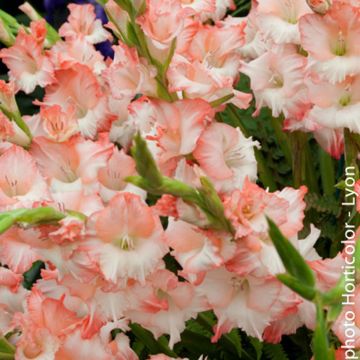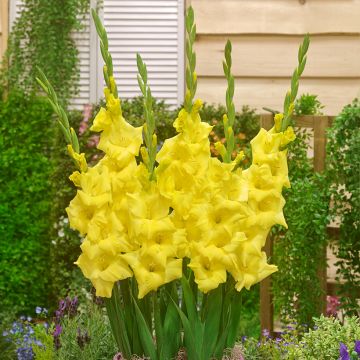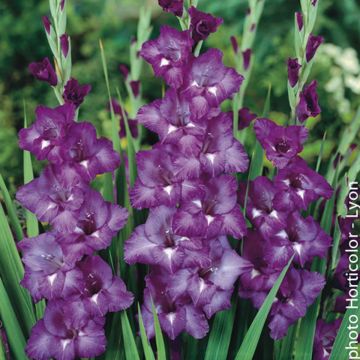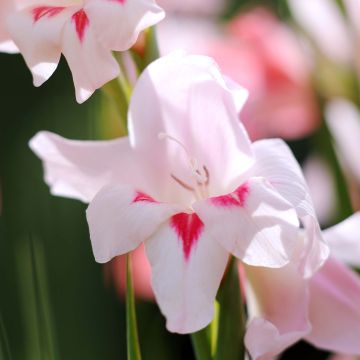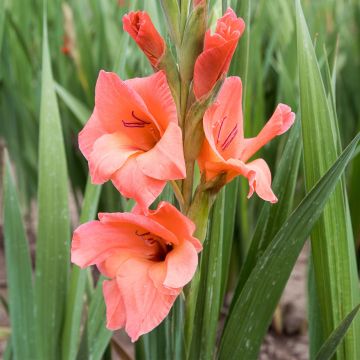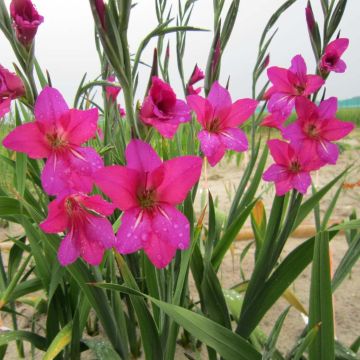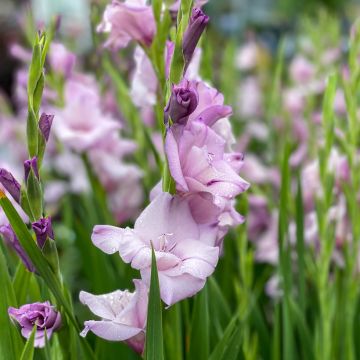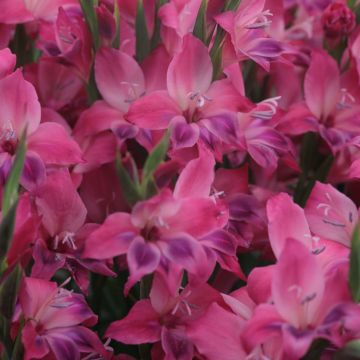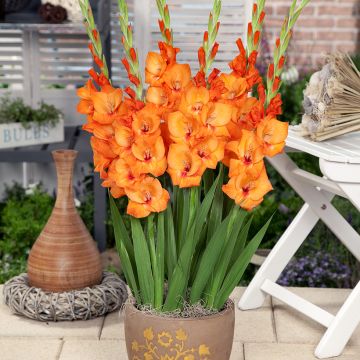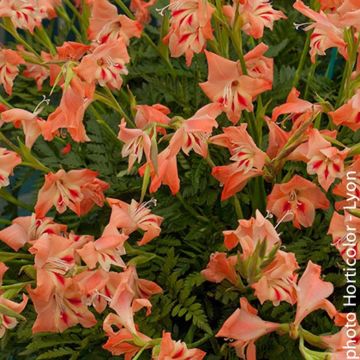Shipping country and language
Your country of residence may be:
Your country of residence is:
For a better user experience on our website, you can select:
Your shipping country:
-
Andorra
-
Austria
-
Belgium
-
Bulgaria
-
Canada
-
Chile
-
Croatia
-
Cyprus
-
Czechia
-
Denmark
-
Estonia
-
Finland
-
France
-
Germany
-
Greece
-
Hungary
-
Iceland
-
Ireland
-
Italy
-
Latvia
-
Lithuania
-
Luxembourg
-
Malta
-
Monaco
-
Netherlands
-
Poland
-
Portugal
-
Romania
-
Slovakia
-
Slovenia
-
Spain
-
Sweden
-
Switzerland
-
United Kingdom
We only deliver seed and bulb products to your country. If you add other products to your basket, they cannot be shipped.
Language:
-
French
-
German
-
Spanish
-
English
My Account
Hello
My wish lists
Log in / Register
Existing customer?
New customer?
Create an account to track your orders, access our customer service and, if you wish, make the most of our upcoming offers.
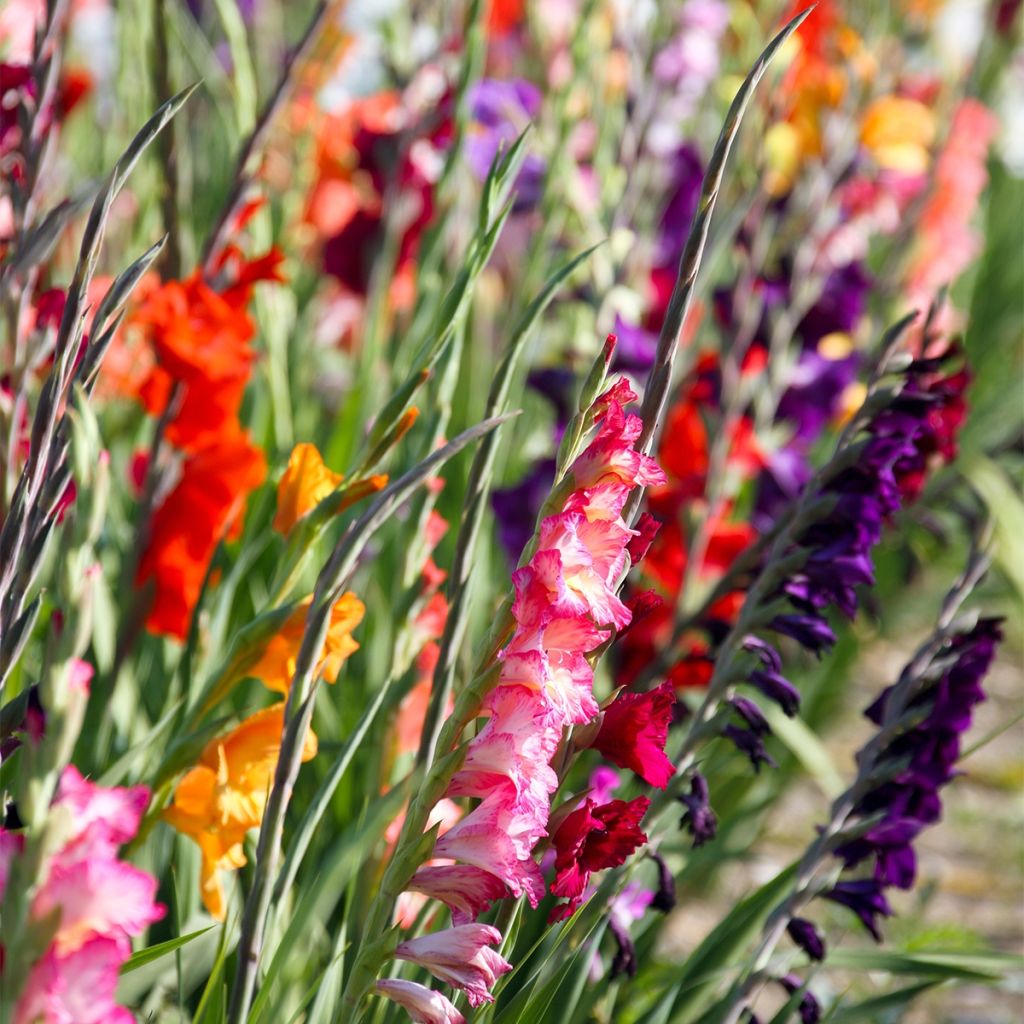

Gladiolus ou Glaïeuls en mélange (petites fleurs)
Gladiolus nanus Mix
Gladiolus nanus Mix
Flowers true to description, they bloomed all summer long in a beautiful range of colours, taking turns. A little tip, though: stake the plants as they tend to droop under their own weight.
Maëva, 12/10/2021
Order in the next for dispatch today!
Dispatch by letter from €3.90.
Delivery charge from €5.90 Oversize package delivery charge from €6.90.
More information
This item is not available in your country.
Schedule delivery date,
and select date in basket
This plant carries a 6 months recovery warranty
More information
We guarantee the quality of our plants for a full growing cycle, and will replace at our expense any plant that fails to recover under normal climatic and planting conditions.
From €5.90 for pickup delivery and €6.90 for home delivery
Express home delivery from €8.90.

Does this plant fit my garden?
Set up your Plantfit profile →
Description
This mix of small-flowered gladioli brings together several dwarf varieties in a range of pastel or vibrant colours that are either solid or two-tone. The colours include white, pinks, reds, and purples. These gladioli produce spikes that are shorter than Dutch hybrids, and their flowering has retained the natural charm of wild plants. They integrate well among other plants in the garden. When planted in the ground, they are more resistant to winters that are not too harsh.
The genus Gladiolus belongs to the Iridaceae family. Cultivated gladioli are hybrids with large flowers, divided into 3 main groups: Grandiflorus (with large flowers), Primulinus (early), and Nanus (butterflies). The gladioli in this mix are characterised by small flowers that are irregularly arranged on stems that do not exceed 60cm (24in) in height. The stems are more resistant to wind.
It is a perennial herbaceous plant with corms (globose bulbs) and wide sword-shaped leaves arranged in a fan shape. It forms a clump 35 to 45cm (14 to 18in) tall. The leaves are topped by loose spike-shaped inflorescences, 45 to 60cm (18 to 24in) tall. The lily-like flowers are composed of 6 unequal petals, measuring 5 to 7cm (2 to 3in) in diameter. Depending on the plants, these flowers can be pure white, white with small pink or red signals in the throat, fuchsia-pink with a white throat, red, or purple. Carried by very thin stems, the flowers open in groups of 3 or 4 from bottom to top and form beautiful floral spikes. The storage organ is a corm, which is a swollen stem with scales. Each corm will produce 1 to 3 floral spikes.
Gladioli and their colourful flower stalks are a symbol of the 1970s and somewhat formal floral arrangements. While they are irreplaceable in bouquets, their silhouette in gardens needs the presence of plants with lush foliage or ethereal blooms to enhance their flowers. Dwarf gladioli fit well in borders of single perennials or low-growing shrubs, most often without requiring staking. They pair well with groundcover roses (The Fairy, Knock Out), small grasses (Stipa pennata or S. tenuifolia), forget-me-nots, penstemons, catmints, and agastaches, for example. Play with the vibrant blue of perennial flax and the soft pink of baby's breath for brightness, and add plants with silver foliage (stachys, artemisias). For bouquets, cut the flower stalks when the first floret starts to open. Plant them at intervals of two weeks from early spring until the end of June to have flowers in the house and garden all summer long.
Report an error about the product description
Plant habit
Flowering
Foliage
Botanical data
Gladiolus
nanus
Mix
Iridaceae
Cultivar or hybrid
Other Gladioli
Planting and care
Gladioli like rich, fertile, well-drained soils. Sandy and loamy soils are preferred. Compact clay should be avoided. Choose a sunny, sheltered position. Avoid using manure to fertilise the soil, as it causes bulb rot. Plant the corms under 8 to 10cm (3 to 4in) of soil, spacing them 10 to 15cm (4 to 6in) apart. The plant should not lack water during its growth and flowering period, but its bulbs appreciate being dry during the resting period. The corms of this variety can overwinter in the ground, in well-drained and healthy soil, covered with a thick mulch to prevent damage from severe frosts. In very cold regions, the plants should be dug up as soon as the leaves have yellowed, and stored in turf, kept dry and protected from heat and frost. You can also grow them in pots that can be protected from the cold (20 bulbs per 20 to 22cm (8 to 9in) pot).
Planting period
Intended location
Care
-
, onOrder confirmed
Reply from on Promesse de fleurs
Haven't found what you were looking for?
Hardiness is the lowest winter temperature a plant can endure without suffering serious damage or even dying. However, hardiness is affected by location (a sheltered area, such as a patio), protection (winter cover) and soil type (hardiness is improved by well-drained soil).

Photo Sharing Terms & Conditions
In order to encourage gardeners to interact and share their experiences, Promesse de fleurs offers various media enabling content to be uploaded onto its Site - in particular via the ‘Photo sharing’ module.
The User agrees to refrain from:
- Posting any content that is illegal, prejudicial, insulting, racist, inciteful to hatred, revisionist, contrary to public decency, that infringes on privacy or on the privacy rights of third parties, in particular the publicity rights of persons and goods, intellectual property rights, or the right to privacy.
- Submitting content on behalf of a third party;
- Impersonate the identity of a third party and/or publish any personal information about a third party;
In general, the User undertakes to refrain from any unethical behaviour.
All Content (in particular text, comments, files, images, photos, videos, creative works, etc.), which may be subject to property or intellectual property rights, image or other private rights, shall remain the property of the User, subject to the limited rights granted by the terms of the licence granted by Promesse de fleurs as stated below. Users are at liberty to publish or not to publish such Content on the Site, notably via the ‘Photo Sharing’ facility, and accept that this Content shall be made public and freely accessible, notably on the Internet.
Users further acknowledge, undertake to have ,and guarantee that they hold all necessary rights and permissions to publish such material on the Site, in particular with regard to the legislation in force pertaining to any privacy, property, intellectual property, image, or contractual rights, or rights of any other nature. By publishing such Content on the Site, Users acknowledge accepting full liability as publishers of the Content within the meaning of the law, and grant Promesse de fleurs, free of charge, an inclusive, worldwide licence for the said Content for the entire duration of its publication, including all reproduction, representation, up/downloading, displaying, performing, transmission, and storage rights.
Users also grant permission for their name to be linked to the Content and accept that this link may not always be made available.
By engaging in posting material, Users consent to their Content becoming automatically accessible on the Internet, in particular on other sites and/or blogs and/or web pages of the Promesse de fleurs site, including in particular social pages and the Promesse de fleurs catalogue.
Users may secure the removal of entrusted content free of charge by issuing a simple request via our contact form.
The flowering period indicated on our website applies to countries and regions located in USDA zone 8 (France, the United Kingdom, Ireland, the Netherlands, etc.)
It will vary according to where you live:
- In zones 9 to 10 (Italy, Spain, Greece, etc.), flowering will occur about 2 to 4 weeks earlier.
- In zones 6 to 7 (Germany, Poland, Slovenia, and lower mountainous regions), flowering will be delayed by 2 to 3 weeks.
- In zone 5 (Central Europe, Scandinavia), blooming will be delayed by 3 to 5 weeks.
In temperate climates, pruning of spring-flowering shrubs (forsythia, spireas, etc.) should be done just after flowering.
Pruning of summer-flowering shrubs (Indian Lilac, Perovskia, etc.) can be done in winter or spring.
In cold regions as well as with frost-sensitive plants, avoid pruning too early when severe frosts may still occur.
The planting period indicated on our website applies to countries and regions located in USDA zone 8 (France, United Kingdom, Ireland, Netherlands).
It will vary according to where you live:
- In Mediterranean zones (Marseille, Madrid, Milan, etc.), autumn and winter are the best planting periods.
- In continental zones (Strasbourg, Munich, Vienna, etc.), delay planting by 2 to 3 weeks in spring and bring it forward by 2 to 4 weeks in autumn.
- In mountainous regions (the Alps, Pyrenees, Carpathians, etc.), it is best to plant in late spring (May-June) or late summer (August-September).
The harvesting period indicated on our website applies to countries and regions in USDA zone 8 (France, England, Ireland, the Netherlands).
In colder areas (Scandinavia, Poland, Austria...) fruit and vegetable harvests are likely to be delayed by 3-4 weeks.
In warmer areas (Italy, Spain, Greece, etc.), harvesting will probably take place earlier, depending on weather conditions.
The sowing periods indicated on our website apply to countries and regions within USDA Zone 8 (France, UK, Ireland, Netherlands).
In colder areas (Scandinavia, Poland, Austria...), delay any outdoor sowing by 3-4 weeks, or sow under glass.
In warmer climes (Italy, Spain, Greece, etc.), bring outdoor sowing forward by a few weeks.
